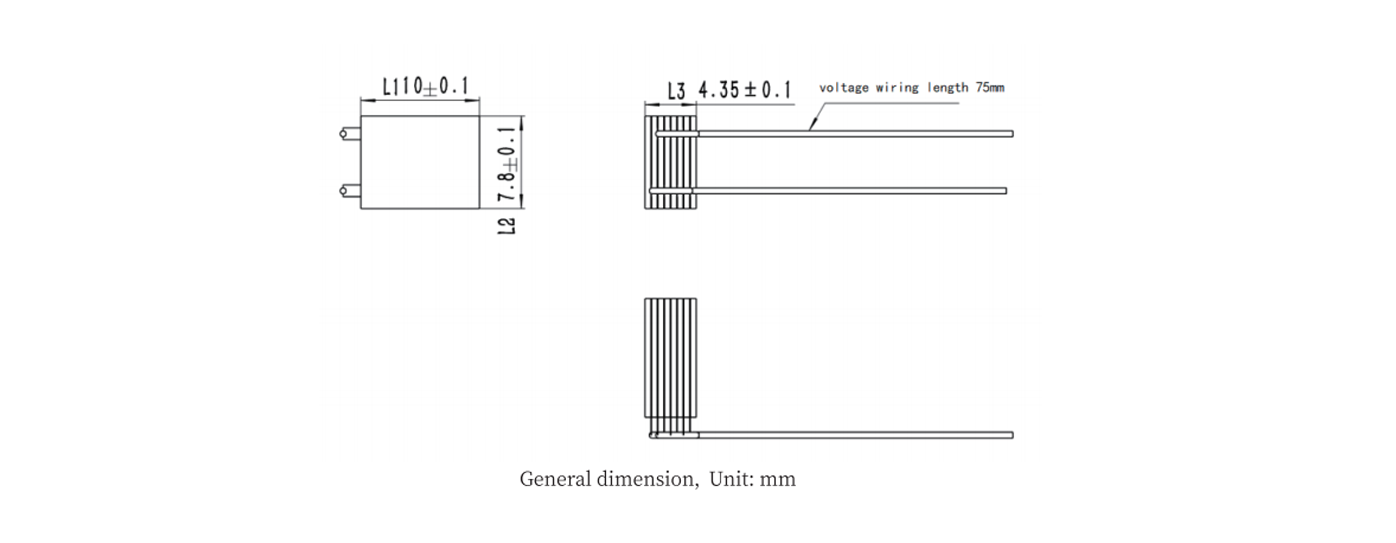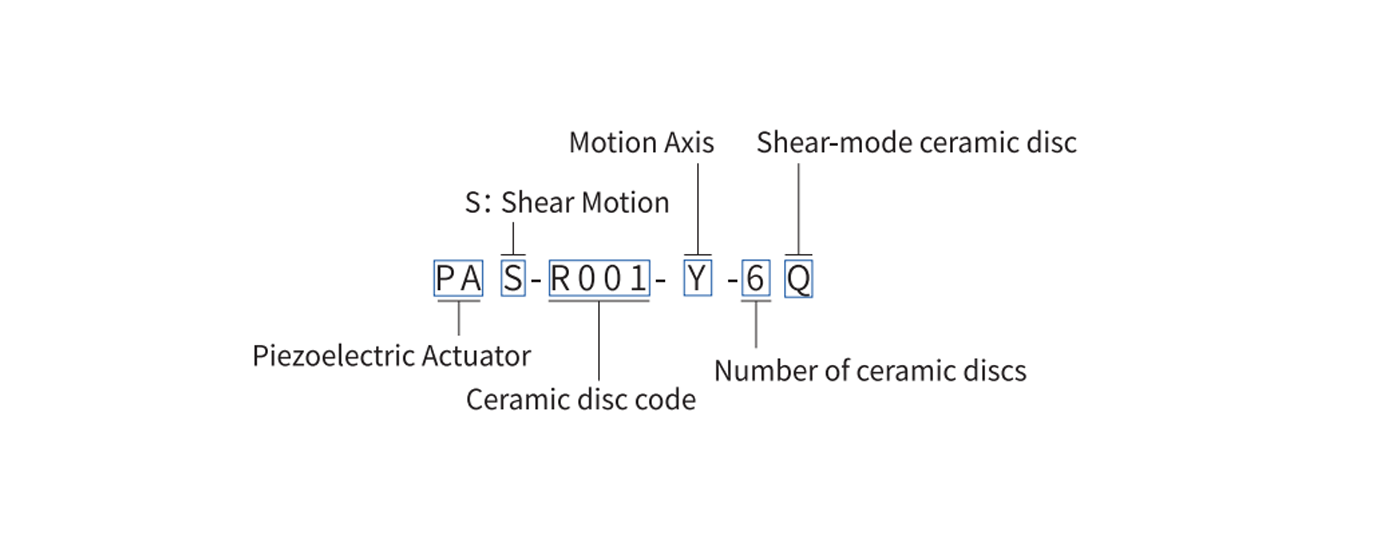The shear-type piezoelectric ceramic stack is a stacked device composed of multiple piezoelectric ceramic shear plates bonded together. By superimposing the shear displacements of multiple plates, a larger overall displacement is achieved. The shear stack can produce displacement in one-dimensional to three-dimensional XYZ directions, with a maximum displacement of up to 13 μm in a single axis, and the drive voltage of each ceramic layer can be independently controlled.

|
|
PAS-R001-Y-6Q |
Unit |
Tolerance |
|
Active axes |
X/Y |
|
|
| Electrical properties | |||
|
Operating voltage |
-250~250 |
V |
|
|
Max. displacement (+250~-250) |
13 |
μm |
±15% |
|
Resonant frequency of the longitudinal direction |
190 |
kHz |
±20% |
|
Anti - resonant frequency of the longitudinal direction |
235 |
kHz |
±20% |
|
Resonant frequency of the thickness direction |
580 |
kHz |
±20% |
|
Anti - resonant frequency of the thickness direction |
615 |
kHz |
±20% |
|
Electrical capacitance |
23 |
nF |
±15% |
|
Operating temperature range |
-25~130 |
°C |
|
|
End face electrode material |
Gold |
|
|
|
Cable length |
75 |
mm |
±5 mm |
|
Curie temperature |
280 |
°C |
|
| Dimensions | |||
|
L1 |
10 |
mm |
±0.1 mm |
|
L2 |
7.8 |
mm |
±0.1 mm |
|
L3 |
4.35 |
mm |
±0.1 mm |
